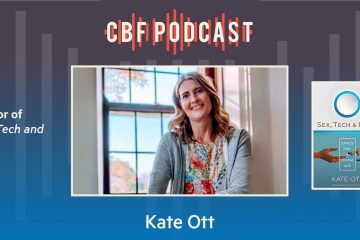Recently a colleague contacted me with some delightful news. New to her congregation and in her first call, she had met with the parents and youth and proposed that they use my Sex + Faith book as a springboard for Sunday School conversations. To her surprise (and I will admit, mine too) they embraced the idea!
Then came the question: How do we use the book for a conversation that engaged parents and youth over a series of weeks?
Here was my response . . .
For parents, I might suggest breaking up the book into three different sections.
For the first few chapters, I would “assign reading” prior to Sunday morning and then have small and large group discussions.
Class one:
Read the Introduction, Chap 1: Five Common Myths and Chap 4: What Exactly is Sexuality Education.
Discuss: What do we mean by sexuality and sexuality education? What is one point in the reading that really stuck with you? What were you most challenged by in the reading? What question do you have after doing this reading?
Class two:
Read Chap 2: The Parent’s Role
Discuss: What are our models of parenting? (what parenting style did you experience in childhood, what do you do similarly or differently, how does faith inform parenting)
Class three:
Read Chap 3; The Faith Connection
Discuss: How do faith and sexuality intersect? Maybe consider what messages you received in childhood and what you might do differently.
Class four:
Read Chap 5: What’s Changed Since I Was a Kid? and Chap 6: Steps for Answering Children’s Questions
Share ideas for starting conversations and practice answering questions the group suspects their children might ask them.
Classes Five to Eight:
The group could do one of two things:
- Read each age group section (0-5, 6-10, 11-13, 14-18). Even if the parents do not have young kids anymore, each section allows parents to consider what kind of foundation they did or did not create for current conversations. Also as members of the church, parents interact with kids of all ages and could use the readings to reinforce positive messages for everyone. In those sections, I would start with the quiz as a fun discussion topic. Then use the group as peer resources to clarify questions related to the physical, relational, and faith development sections. Last, I would spend the most time discussing the connection between faith and sexuality section in hopes of considering concrete ways the community at church and parents at home could foster such healthy and positive connections.
- Read only age group that relates to the age of the parent’s children (e.g. teenagers). In that case, I could do one class discussing the two physical and relational development sections. A second class could focus on the two sections faith development and connecting faith and sexualtiy education. A third class could take up special topic issues listed in the middle and high school sections such as: technology, dating violence, pornography, use of drugs and alcohol. The fourth class could address the specific sexual ethic each family and the congregation wants to communicate to the youth. For that class the group might focus on the discussion in the book related to abstinence, marriage, and my own answer to “are we ready to have sex?” on page 124.
For teens, I wouldn’t suggest having them read the entire book. I would suggest they read sections like: Chap 4: What Exactly is Sexuality Education? and Chap 3: The Faith Connection. Then, I would recommend is a sequence that uses the studies I and others have written for teen youth groups at www.TheThoughtfulChristian.com. They are interactive and get at the main issues in fun, engaging, and age appropriate ways. I’ve listed them below by title with hyperlinks. You can see a full description of each by clicking on the link. I find the studies can either be selectively done in about an hour or stretched over two meetings, so you might not need all 7 or you might want to pick a few and spend extra time on specific topics. Here is what those 8 sessions might look like:
- Read and Discuss – Chap 3: The Faith Connection.and Chap 4: What Exactly is Sexuality Education?
- Wonderfully Made – Building Body Image in Youth
- Forming a Healthy Relationship
- The Dating Game
- What Digital Story are You Writing?
- What does it mean to pledge sexual purity? (FYI: This is not a pro-abstinence-until-marriage curriculum. It asks youth to consider what the role of sexuality is in their relationships and how values are meant to guide our behaviors, not absolute bans.)
- Contemplating Sex
- Defining Pornography
My last suggestion for a parents and youth in a congregation that have embraced these discussions would be to have the parents and teens decide as a group what they would like to share with, tell, present (whatever you call it) to the other group. Perhaps for session nine, the teens could facilitate discussion with the parents and vice versa for ten with the parents facilitating discussion.
I hope many congregations will consider using this model! If a congregation or small group of parents has used the book as a study guide, please share how you designed the gatherings!



1 Comment
Heeyoung Jung · October 17, 2014 at 11:12 pm
This is really helpful, actually, I was thinking that I want to have time for kids’ parents to study Sexuality from a Christian perspective so that kids’ parents can teach and take care of them for health sexuality. In this sense, Dr Ott’s new book and this curriculum are so useful to apply for the Sunday school’s. I really appreciate to share it! 🙂
Comments are closed.